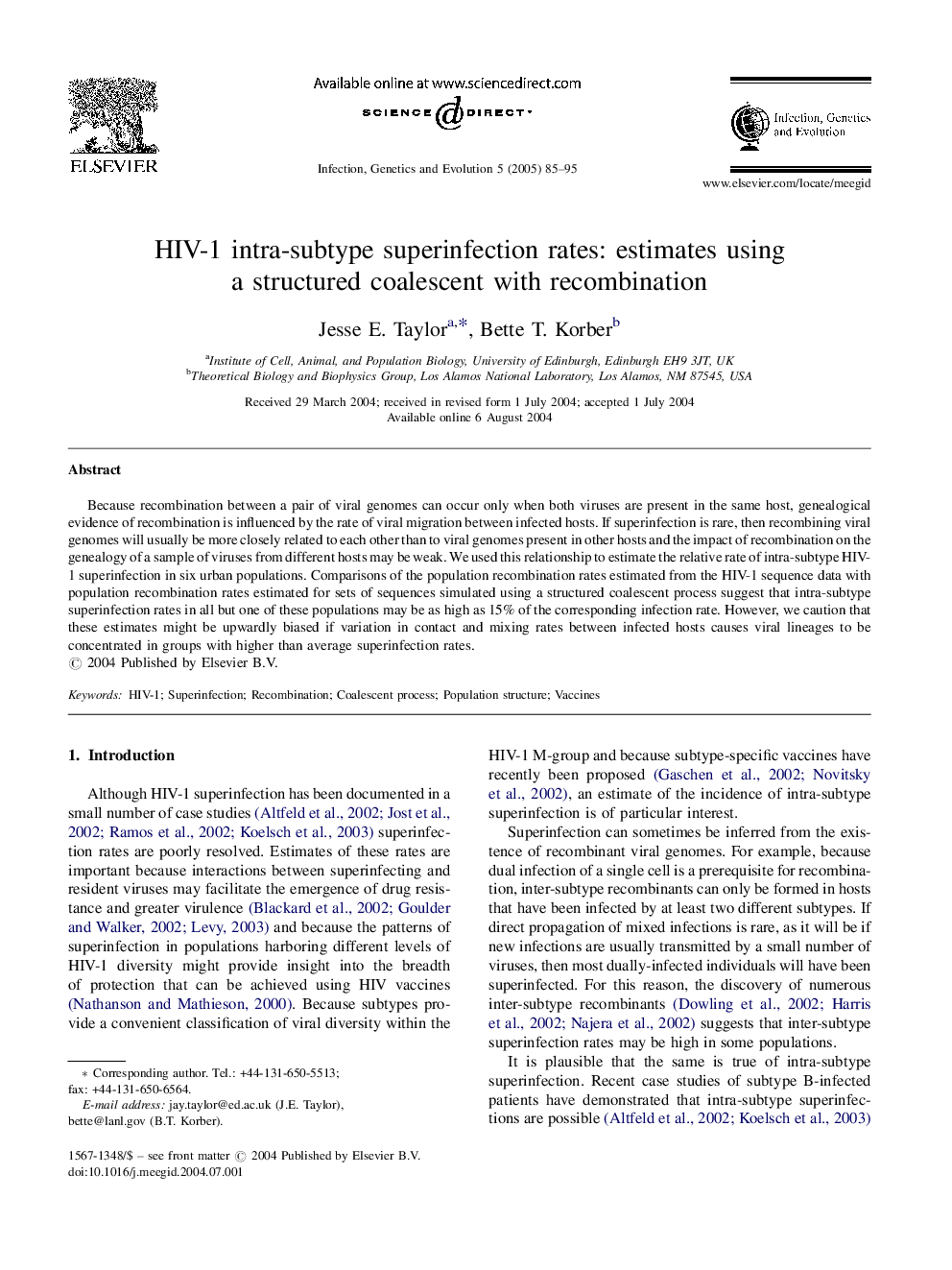| Article ID | Journal | Published Year | Pages | File Type |
|---|---|---|---|---|
| 9133488 | Infection, Genetics and Evolution | 2005 | 11 Pages |
Abstract
Because recombination between a pair of viral genomes can occur only when both viruses are present in the same host, genealogical evidence of recombination is influenced by the rate of viral migration between infected hosts. If superinfection is rare, then recombining viral genomes will usually be more closely related to each other than to viral genomes present in other hosts and the impact of recombination on the genealogy of a sample of viruses from different hosts may be weak. We used this relationship to estimate the relative rate of intra-subtype HIV-1 superinfection in six urban populations. Comparisons of the population recombination rates estimated from the HIV-1 sequence data with population recombination rates estimated for sets of sequences simulated using a structured coalescent process suggest that intra-subtype superinfection rates in all but one of these populations may be as high as 15% of the corresponding infection rate. However, we caution that these estimates might be upwardly biased if variation in contact and mixing rates between infected hosts causes viral lineages to be concentrated in groups with higher than average superinfection rates.
Related Topics
Life Sciences
Agricultural and Biological Sciences
Ecology, Evolution, Behavior and Systematics
Authors
Jesse E. Taylor, Bette T. Korber,
